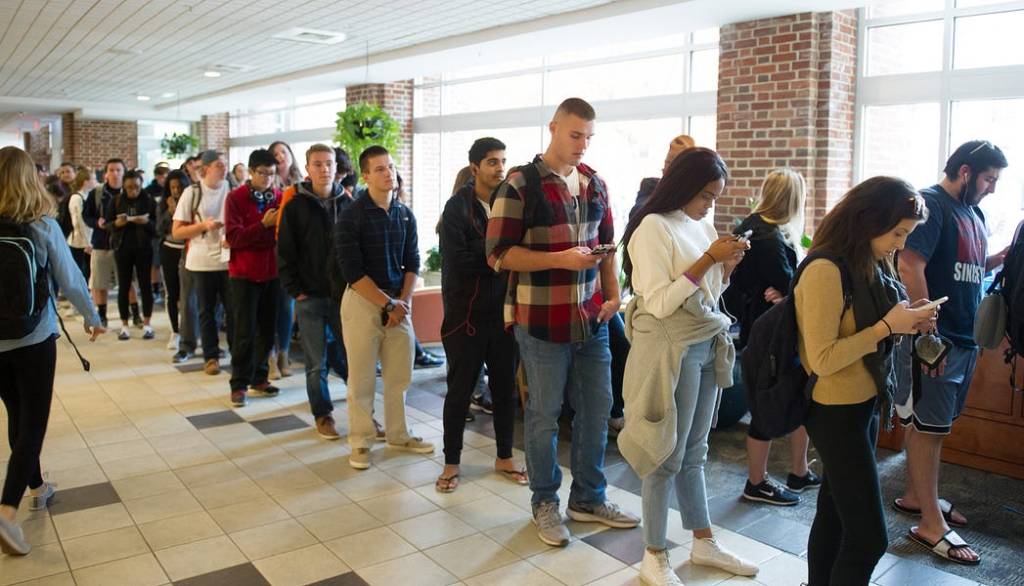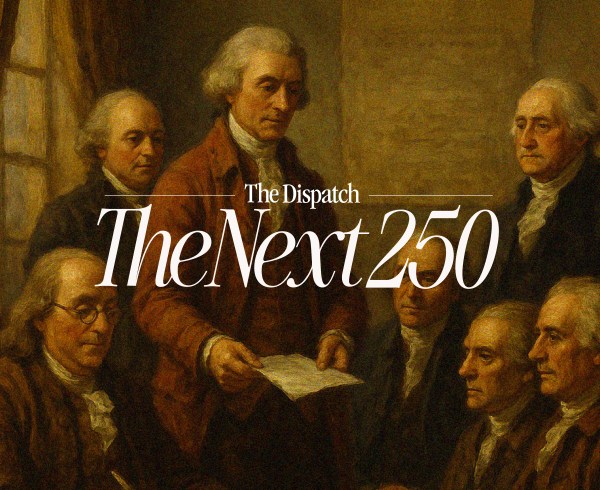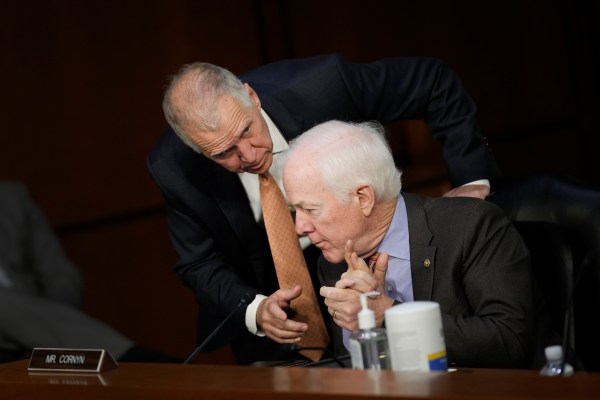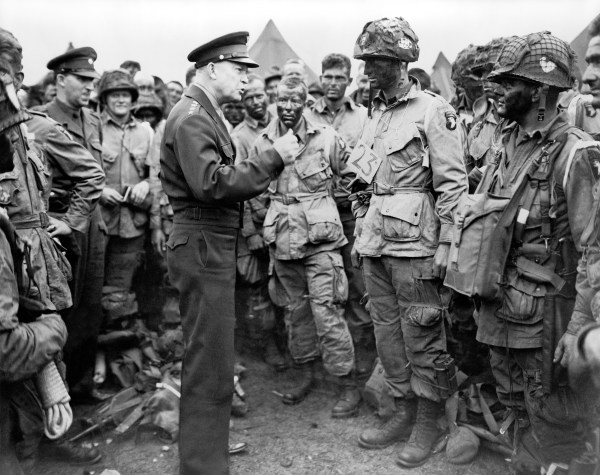Democrats and Republicans had to reinvent their political conventions during the pandemic, but their new made-for-TV speeches continued to target the same audience: suburban voters, especially women, whom both parties see as potential swing voters. The two parties, and most political pundits, continue to underrate the rapidly growing influence of young voters. New poll data shows that young voters will be a strong, perhaps decisive, force in the 2020 election. The two parties must take them seriously.
The Knight Foundation just released a revealing new national survey of 4,000 full-time college students currently enrolled in four-year degree programs. The survey confirms that political engagement among Gen Z voters is pervasive and serious. No previous generation of new and recent voters has shown similar commitment to vote and make a political difference in other ways. Although Gen Z voters prefer Democrats to Republicans, they are not firmly and permanently committed to either party, and they reject many partisan orthodoxies. Young voters are eager to change our broken politics, and they are up for grabs. The candidates who attract their favor this November will gain a major advantage, especially in close races.
Young voters are indeed fired up. The Knight data shows that 71 percent of Gen Z college students say they are “absolutely certain” they will vote in the upcoming election, with female students expressing greater certainty than their male counterparts by a margin of 10 points. Democratic identifiers are the most likely to be absolutely certain they will vote (81 percent), followed by Republicans (74 percent) and Independents (63 percent); so large majorities of all outlooks.
Before you shake your head and point out that every election features stories about how the youth turnout could shape the election—and then it doesn’t—the figures today are far higher than what was reported in earlier surveys before previous presidential elections. In 2016, 49 percent of 18–29 year olds stated that they would “definitely” be casting a vote, and in 2012 the figure was 48 percent. The actual turnout? In 2016 it was 43 percent and 41 percent. Moreover, 79 percent of college students today believe that most or all of their close friends will be voting in November—this is greater than the national figure of 71 percent, which again shows that the youthquake is materializing.
Another data point that shows this year really might be different comes from 2018. The study’s summary says “College students demonstrated some of the most dramatic surges in voter turnout for the 2018 midterm election of any voter group.” In the 2014 midterm, 18-29 year olds voted at a rate of 16 percent and by 2018, they surged to 33 percent, practically doubling. While all other age groups saw an increase from 2014 to 2018, none of them saw such a large increase. Boomers (60+) went from 55% to 66%, a 21 percent increase compared with the 106 percent increase for those 18-29. Surges can happen and may happen in 2020.
It’s only one primary in one Texas county, but just last month the Austin American-Statemsan reports, “Voters younger than 40 cast about 37 percent of the votes in Travis County’s Democrat primary runoff,” in an election that saw overall turnout increase dramatically. We can expect the same elsewhere, especially battleground states like Florida, North Carolina, Pennsylvania, Wisconsin, and Michigan which all have large student populations.
Relatedly, the Knight poll found that almost three-quarters (72 percent) of college students are following the news about the 2020 election very or fairly closely. This appears to be considerably up from 2016 where 56 percent of younger Americans between 18 and 29 followed the national news very or somewhat closely, and 64 percent followed the presidential race very or somewhat closely. Although the 2016 election was quite controversial, youth engagement is trending even higher now.
What’s interesting is that this increased curiosity and engagement comes at a time when young voters are not necessarily enthusiastic about either major-party candidate. Democrats have an advantage in that 66 percent of college students stated that they intend to vote for Democratic nominee Joe Biden, while 20 percent intend to support Republican President Donald Trump.
But Biden is not universally appreciated by those in Gen Z. The survey reveals that only 7 percent of college students have a “very favorable” view of Biden and another 42 percent have a somewhat favorable view, making for a collective 49 percent favorability rating. In contrast, 29 percent of those in college have a somewhat unfavorable rating of Biden, and another 22 percent have a very unfavorable rating. These students wanted someone else to become the Democratic presidential nominee, but they still intend to vote for Biden this year.
As for President Trump, his approval ratings are abysmal among Gen Z voters, indicating that his brand of partisanship does not have a strong future with a new generation of voters. Only 19 percent of respondents have a very or somewhat favorable view of Trump. His unfavorable rating is 83 percent, which is appreciably greater than his national unfavorable rating of 53 percent. But this is, again, not entirely monolithic.
Views of the parties are also varied among young voters. The Republican party is not particularly liked, with just 26 percent of students having a favorable view of it. The Democratic Party, on the other hand, is viewed favorably by 51 percent, with 29 percent having a somewhat unfavorable, and 20 percent a very unfavorable view. Young voters really dislike Republicans compared to the Democrats, but there is a lot of room for others to capture their support, especially if candidates make new appeals to this rising generation. One way we can tell is to look at news consumption habits: Only 4 percent of college students use Fox News as their main source, and only 7 percent cite CNN or MSNBC. Students are not flocking to these fairly partisan news sources. Other data from the spring of 2020 shows that the Americans between 18-29 are regularly split and not-monolithic on issues of economic growth, immigration, hiring of workers, tax policy, and school choice—all areas where a reasonable GOP could appeal to younger voters.
Of course, polling in late summer is only a snapshot of a dynamic and unpredictable year. The nation still has 10 weeks until Election Day, with incredible global and political instability, and the world may look very different in just a few weeks. The stakes are the highest in generations this fall, and our nation’s youth know that the nation is not working at it should. Polling data gives strong indication that Gen Z voters are prepared to express their voices at the ballot box in unprecedented numbers. Young men and women will have more influence on electoral outcomes than we have seen in any recent period. That is good for democracy.
Photograph by Jeff Swensen/Getty Images.






Please note that we at The Dispatch hold ourselves, our work, and our commenters to a higher standard than other places on the internet. We welcome comments that foster genuine debate or discussion—including comments critical of us or our work—but responses that include ad hominem attacks on fellow Dispatch members or are intended to stoke fear and anger may be moderated.
With your membership, you only have the ability to comment on The Morning Dispatch articles. Consider upgrading to join the conversation everywhere.